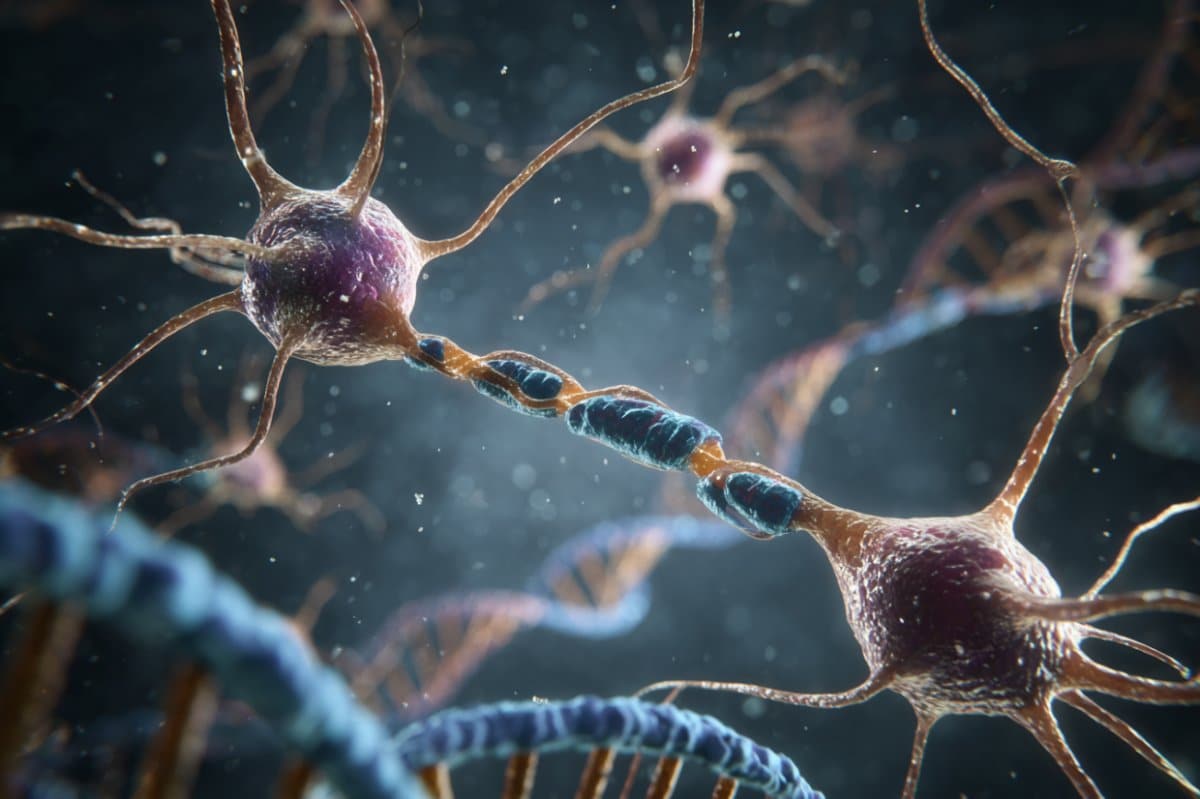Summary: The brain depends on a delicate balance between excitatory and inhibitory neurons to function properly. A new study reveals that inhibitory neurons born later in development mature more quickly than earlier ones, allowing them to catch up and integrate evenly into neural networks.
This accelerated maturation is controlled by genetic mechanisms that reorganize DNA accessibility in precursor cells. The findings shed light on how timing disruptions in neuron development could contribute to disorders like autism and epilepsy.
Key Facts:
- Developmental Timing: Later-born inhibitory neurons mature faster to balance brain circuits.
- Genetic Control: Chromatin reorganization regulates when and how fast neurons develop.
- Health Implications: Disruptions in timing may underlie neurodevelopmental disorders.
Source: Max Planck Institute
The human brain is made up of billions of nerve cells, or neurons, that communicate with each other in vast, interconnected networks.
For the brain to function reliably, there needs to be a fine balance between two types of signals: Excitatory neurons that pass on information and increase activity, and inhibitory neurons that limit activity and prevent other neurons from becoming too active or firing out of control.

This balance between excitation and inhibition is essential for a healthy, stable brain.
Inhibitory neurons born later mature quicker
Inhibitory neurons are generated during brain development through the division of progenitor cells – immature cells not yet specialized but already on the path to becoming neurons.
The new study, led by researchers at the Max Planck Institute for Biological Intelligence, uncovered a surprising feature of brain development based on findings in mice: During this essential process, cells born later in development mature much more quickly than those produced earlier.
“This faster growth helps later-born neurons catch up to those produced earlier, so that by the time all these neurons are incorporated into neural networks, they are at a similar stage of development,” said Christian Mayer, research group leader at the Max Planck Institute for Biological Intelligence.
“This is important, as otherwise, earlier-born neurons—having had more time to form connections—could end up with far more synaptic links than those created later. Without this adjustment, the network could be thrown off balance, and individual cells would have too many or too few connections.”
Genetic control and disease
In the study, the researchers also explored how the accelerated maturation of later-born inhibitory neurons is regulated. They identified specific genes involved in this process and uncovered how they control when and to what extent a cell reads and uses different parts of its genetic code.
They found that the faster development of later-born inhibitory neurons turns out to be linked to changes in the developmental potential of the precursor cells that generate them—changes which are, in turn, triggered by a reorganization of the so-called ‘chromatin landscape.’
In simple terms, this means that cells adjust the accessibility of certain regions of DNA in the cell nucleus, making key instructions on how and when to develop more readable.
Genetic changes, such as mutations or altered gene regulation, in these genes or processes may alter the developmental pathways of the brain during early embryonic stages, which could contribute to the development of conditions such as autism or epilepsy.
Therefore, this study could ultimately offer insights into how developmental disorders of the brain can begin so early in life.
Developmental timing in humans and other mammals
These findings highlight the critical importance of inhibitory neurons being ready in time during brain development, regardless of when they are produced. The pace at which these cells mature and are integrated into brain networks is carefully regulated by genetic mechanisms—a process known as ‘developmental timing.’
It is already known that the developmental timeline differs considerably between mammal species. In humans, brain development takes place over a particularly long period compared to other animals.
This extended window is thought to allow the human brain to build more complex networks and sustain learning over a longer period, which might help explain its extraordinary cognitive abilities.
The new findings provide scientists with fresh leads to better understand why the timing of inhibitory neuron maturation is precisely controlled during development, and how variations in this timing may contribute to differences in brain development across species.
More research needed
The newly discovered mechanisms highlight just how important both genetic factors and the correct pace of development are for a healthy brain. They may also open up new approaches to studying the causes of neurodevelopmental disorders, and potentially one day help to inform the development of treatments.
About this neuroscience research news
Author: Christina Bielmeier
Source: Max Planck Institute
Contact: Christina Bielmeier – Max Planck Institute
Image: The image is credited to Neuroscience News
Original Research: Open access.
“Temporal control of progenitor competence shapes maturation in GABAergic neuron development in mice” by Christian Mayer et al. Nature Neuroscience
Abstract
Temporal control of progenitor competence shapes maturation in GABAergic neuron development in mice
Diverse types of GABAergic projection neuron and interneurons of the telencephalon derive from progenitors in a ventral germinal zone called the ganglionic eminence.
Using single-cell transcriptomics, chromatin accessibility profiling, lineage tracing, birthdating, transplantation across developmental stages and perturbation sequencing in mouse embryos, we investigated how progenitor competence influences the maturation and differentiation of these neurons.
We found that the temporal progression of neurogenesis shapes maturation competence in ganglionic eminence progenitors, influencing how their progeny progress toward mature states.
By contrast, differentiation competence—defined as the ability of progenitors to produce diverse transcriptomic identities—was maintained throughout neurogenesis.
Chromatin remodeling, together with a regulatory module composed of the transcription factor NFIB and its target genes, influenced maturation competence in late-born neurons.
These findings reveal how transcriptional programs and chromatin accessibility govern neuronal maturation and the diversification of GABAergic neuron subtypes during neurodevelopment.






